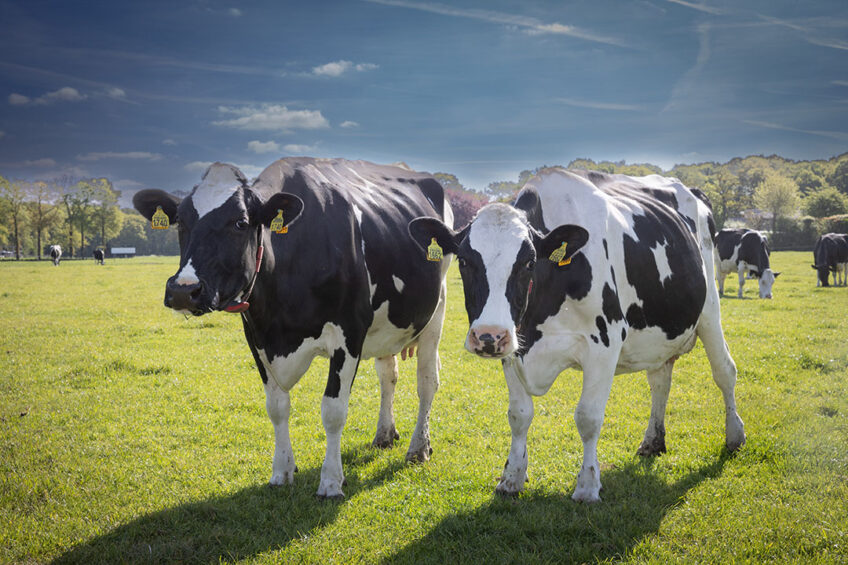UK: funding for cow lameness and productivity

The UK dairy sector is to receive funding as part of a government initiative to boost farming productivity.
Farming Minister Mark Spencer has announced more than £168 million to drive forward innovation, improve productivity and support animal health and welfare through greener equipment, robotics and automation.
Speaking at the National Farmers’ Union conference in Birmingham, Spencer said the grants, delivered through the Farming Innovation Programme (FIP) and Farming Investment Fund (FIF) could include cow mattresses to help lameness in dairy cattle, sensors on tractors to measure the levels of nutrients in soils or improvements to slurry storage.
Dairy cow lameness
Spencer said every year animal sickness, such as lameness in cattle, leads to the loss of thousands of livestock which, in turn, decreases productivity and contributes to farm emissions. New dedicated funding for annual vet-led health and welfare checks for livestock and money to support farmers implement improvements following these visits was announced recently through the Animal Health and Welfare Pathway.
“The role farmers play in putting food on our tables as well as looking after our countryside is crucial. We know that sustainable food production depends on a healthy environment; the 2 go hand in hand.”
Lameness continues to cause issues for UK livestock with around a quarter of all dairy cows experiencing some degree of lameness at any one time. The Agriculture and Horticulture Development Board (AHDB) said the average cost of an incidence of lameness in terms of treatment costs, loss of yield and potential for shortened life of the cow may be £180, equivalent to £15,000 for an average-sized herd.
The general causes of lameness are:
- Poor quality floors in cattle housing
- Poor cow tracks
- Cows being forced to stand for too long on hard surfaces
- Poorly designed cubicles
- Ineffective foot trimming
- Infectious diseases and poor nutrition
Research on lameness
The AHDB has also published 2 “research bites” focusing on predicting lameness in dairy cows using metabolomics and the effect of exercise on first lactation lameness.
Ana Ferreirais, part of a team looking at precision technologies and advanced analytical techniques for early detection and measurement of lameness in dairy herds, said the use of metabolomics to predict lameness had great potential, particularly if predictive biomarkers could be identified that are detectable prior to changes in gait.
So far, the researchers have met expectations in terms of proving the viability of using easy collection of milk samples to identify metabolites that are highly predictive of lameness in a group of dairy cows at the Centre for Dairy Science Innovation at the University of Nottingham.
Validation work is now required to demonstrate the repeatability of results on another group of cows. If successful, this rapid, robust and discriminatory methods shows potential to be used as a convenient and cost-effective sampling procedure for large-scale research and perhaps for the future routine diagnosis of lameness.
Research on the effects of exercise on first lactation lameness, carried out at Massey University, New Zealand, has attempted to reduce levels experienced by dairy heifers using exercise in the rearing period. The study, carried out last year, involved 790 mature in-calf heifers from 6 dairy units. Half were exercised for 5 weeks pre-calving by walking 1km along the farm race, being held standing for an hour and then returning along the 1km race to their respective paddocks. Control heifers were managed solely at pasture.
Just before calving, both groups were brought back together and managed as 1 group for the remainder of the study. The authors investigated the time to first lameness event using a fortnightly mobility score and farmer-detected lameness. The primary outcome measure was recorded for 30 weeks from the first heifer calving into the study.
Of all heifers, 102 lameness events were identified (13% incidence). There were no significant difference between the treatment group (exercised) or the control group in the risk of becoming lame in the first 6 months after calving.
The AHDB said that before applying these findings to UK dairy farms, further data was needed to either refute or support the hypothesis that exercise during the rearing period reduces the risk of lameness in the first lactation. The UK has many more dairy heifers housed than the NZ system and have different challenges presenting in partly or completely housed units compared with NZ’s entirely grazing system.
For example, there is evidence that exposure of heifers to concrete floors pre-calving is beneficial in reducing subsequent lameness, if they are to be exposed to concrete floors after calving.
Join 13,000+ subscribers
Subscribe to our newsletter to stay updated about all the need-to-know content in the dairy sector, two times a week.










